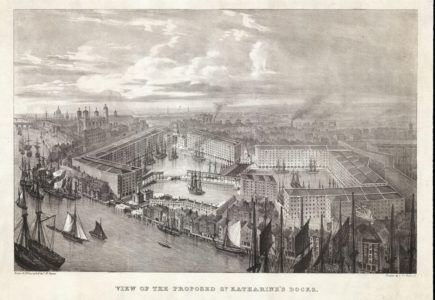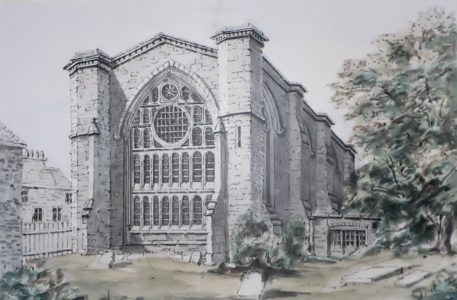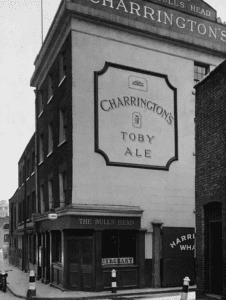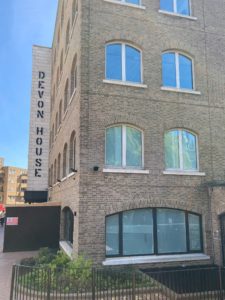A brief history of St Katharine Docks
St Katharine Docks is the beautiful home of our campus at Devon House, however it has a rich and complex history which Dr Olly Ayers, Associate Professor in Modern History at Northeastern University London, has been uncovering.
The story of St Katharine Docks can be traced all the way back to 1147 when Queen Matilda, the wife of King Stephen, set up a church and hospital next to the Tower of London, named St Katharine’s by the Tower (originally spelt with a ‘c’). Fast forward 600 years and the landscape of London had changed dramatically. With overseas trade becoming increasingly desirable towards the end of the eighteenth century, a new series of wet docks were built, allowing ships to be loaded and unloaded quicker than ever before.
Source: Wikipedia
St Katharine Docks were the last of London’s wet docks to be built; they almost weren’t built at all as it initially failed to win parliamentary support. After years of protests against the docks – mostly by residents who were to lose their homes if the reconstruction went ahead – the bill was finally passed in 1825 and St Katharine Docks, as we know it now, were fully opened in 1829. Whilst this move proved successful for the British Empire to establish its dominance in trade around the world, it came at a cost. Over 10,000 people lost their homes in the rebuild and St Katharine’s by the Tower, a key part of the area’s history, was destroyed.


Image © London Metropolitan Archives (City of London)
Source: London Metropolitan Archives – T.M. Baynes, View of the Proposed St Katharine Docks, c. 1825
It’s hard to believe looking at our brand-new state-of-the-art building that this was once a pub, but back in the 1800’s it was one of the most important parts of the docks. The Bull’s Head, as it was called, was where a lot of workers would wait to see what the ships brought; they would come to the docks everyday uncertain of what type of work there would be.
As the Thames is a tidal river, sometimes they would be waiting quite a long time for the tides to change and the ships to come in. A lot of workers were actually hired from the pubs; landlords and landladies were involved in this process, working with the dock companies to hire and fire workers. The idea was that in return the workers would at the end of the day head straight to the pub and spend all their wages. So the pub became a central part of the docks, socially and commercially.
Source: National Brewery Centre Archives
This is a brief overview of the history of St Katharine Docks and our place within it. If you’d like to know more, you can access the story map here.



